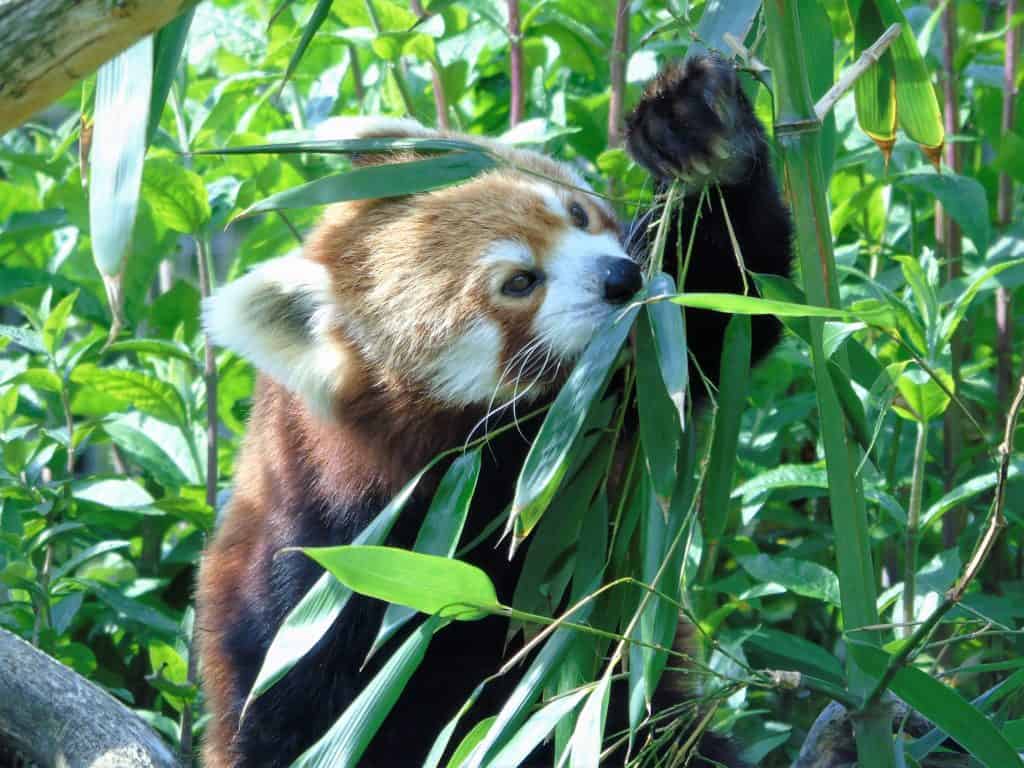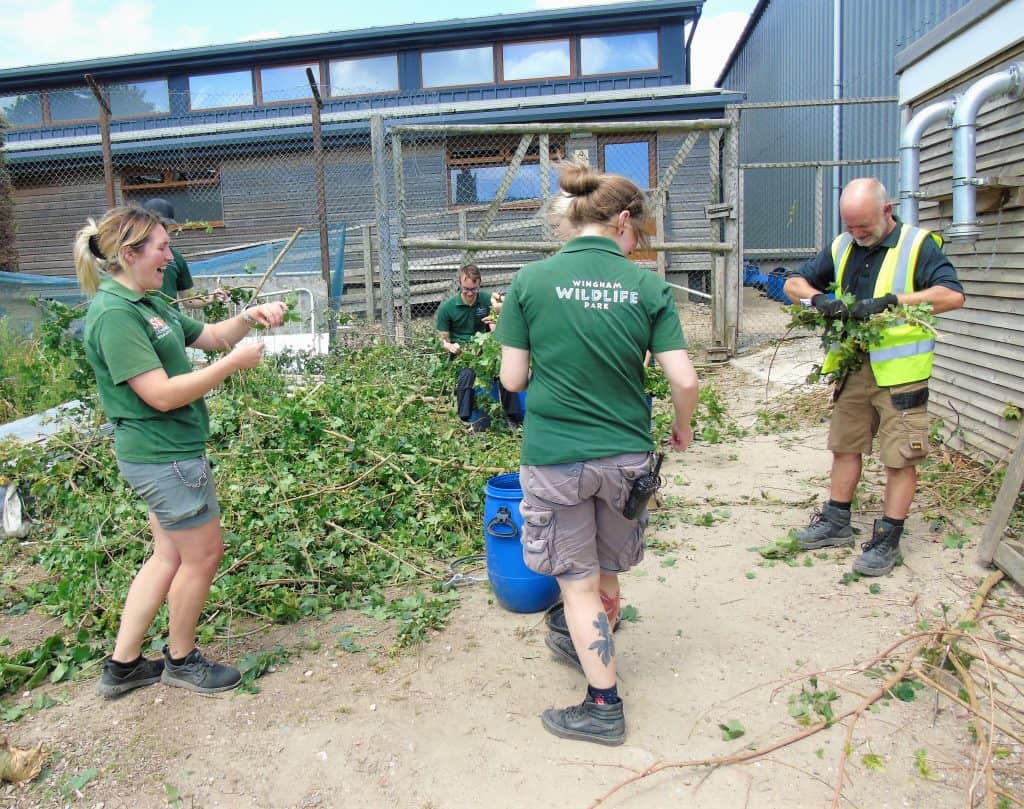You may be wondering what we feed our leaf eating (browse) animals during our winter months when there are much fewer leaves available for them to eat. Well, the answer is browse silage, but what is it?
First there are a few questions to ask, beginning with;
What is a browse feeder?
Within the animal world we would refer to herbivores that feed on leaves from trees or high growing plants, as browse feeders or browsers. This is opposed to herbivores that feed on grasses or lower vegetation, which would be referred to as grazers. Basically, if you must raise your head or climb a tree to eat leaves, you would be referred to as a browser. If your head is down to eat plants from the floor, you would be considered a grazer.
But what is browse?
Browse is what we call plant matter from various trees and shrubs that’s considered safe for leaf eating animals to eat. For example, here at Wingham we house quite a few exclusive browser feeders. Our Giraffes, Black Howlers, and Black and White Colobus monkeys would all be considered exclusive browsers.

We also have several other species which eat a lot of browse. These include our tapirs, orangutans, chimpanzees, red pandas and gibbons.

Now, it’s an easier job to feed these animals fresh leaves in the spring and summer months because it is widely available, but what happens in winter when there are fewer options available?
The last question is,
How do we feed leaves which are from deciduous plants (plants that drop their leaves) in winter?
The answer is, Silaging!
You may have heard of hay silage or haylage before. It’s something which a lot of farmers do to be able to feed livestock in winter better food. Haylage is also now considered a better option for feeding many species in winter, when grazing is not always available and normal hay may be too dry for them. Haylage has better nutrient qualities than normal dried hay, because drying out the grass, loses the nutrients from it.
But even if you haven’t heard of it, you may have seen it but not realised. Have you ever seen those huge, big round bales in a field wrapped in plastic? That’s haylage (hay silage)!

Silaging is a process of preserving a plant by fermentation. Farmers use specialized machinery to cut the grass, then bale it tightly and wrap it in plastic. The idea is to get as much oxygen out of the plastic as possible by squashing the plant matter together. Once packed, the plant material goes through a process called anaerobic fermentation. This starts around 48 hours after it has been packed and converts the natural sugars in the plant to acid. This process stops the plant from decomposing at a certain stage, therefore preserving it and allowing for more of the plant to be able to be eaten months later.
Now we don’t have grasses for our Silaging process, because we are concentrating on browse feeders, not grazers. Instead, we use various tree species, such as, willow, hornbeam, ash, apple, elder, hazel, field maple, oak, and a whole plethora of other species.
Our giraffes alone consume huge amounts of foliage, so we need to prepare a lot of browse silage for winter.
So why am I writing this blog now if it is about feeding our browsers in winter?
Well, this time of year is prime silage production time. We have huge numbers of staff spending, hours and hours cutting trees. Then they deliver the browse to the park, for keepers, volunteers, and work experience students to start cutting down and stuff into 60-liter barrels for storage until winter.

On average (depending on the tree) it can take anywhere from 20 minutes to 2 hours to fill a single barrel.

We need to fill at least 90-120 barrels to see use through the winter months. So, you can imagine the time this takes to accomplish. If you look to your left when you come down the stairs from the orangutan’s indoor area, you will see where we store our silage barrels.

So, I think this deserves a BIG thank you to all the people that make this happen. They allow the animals at WWP to get the best food possible during those colder months.


